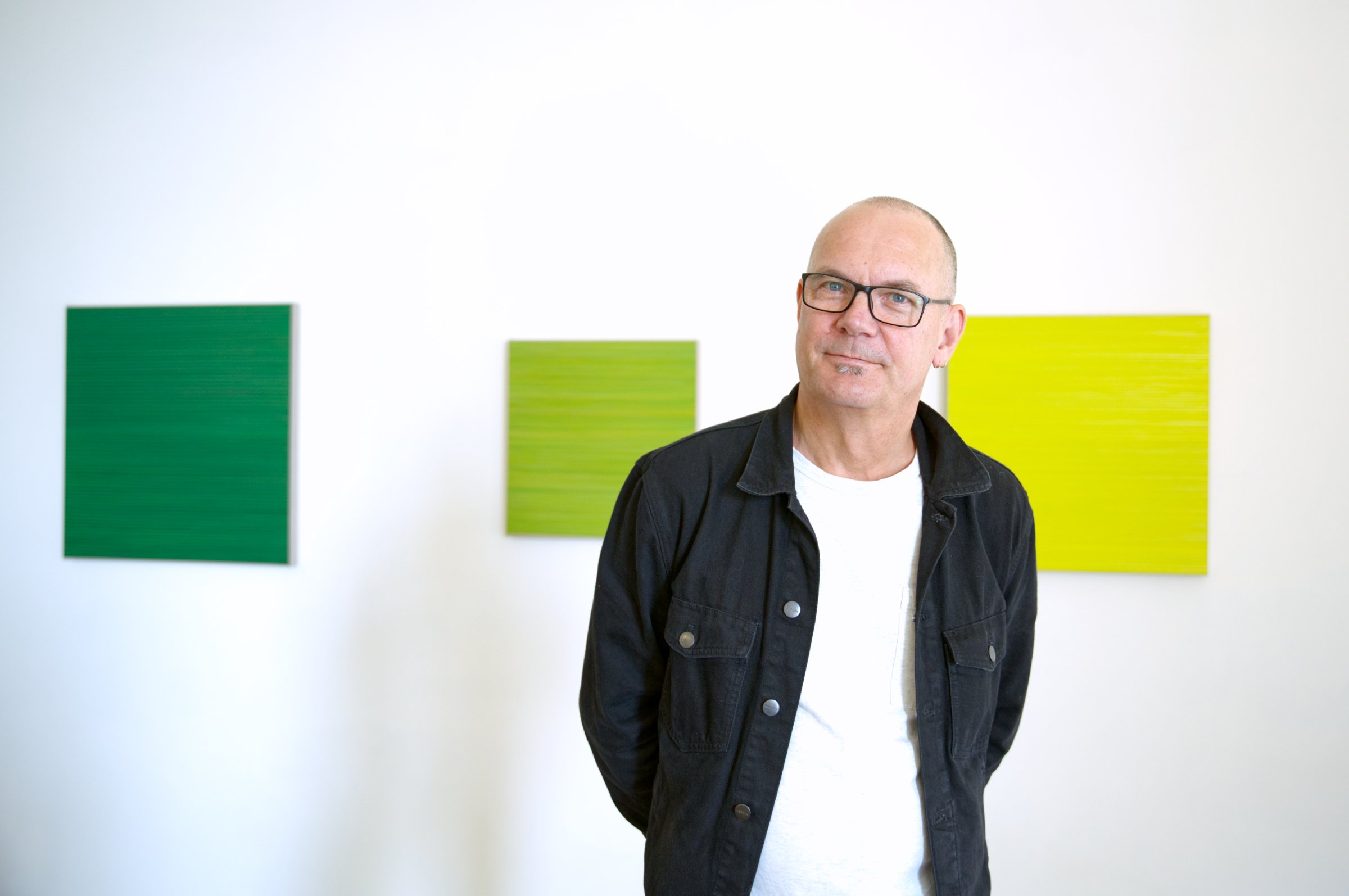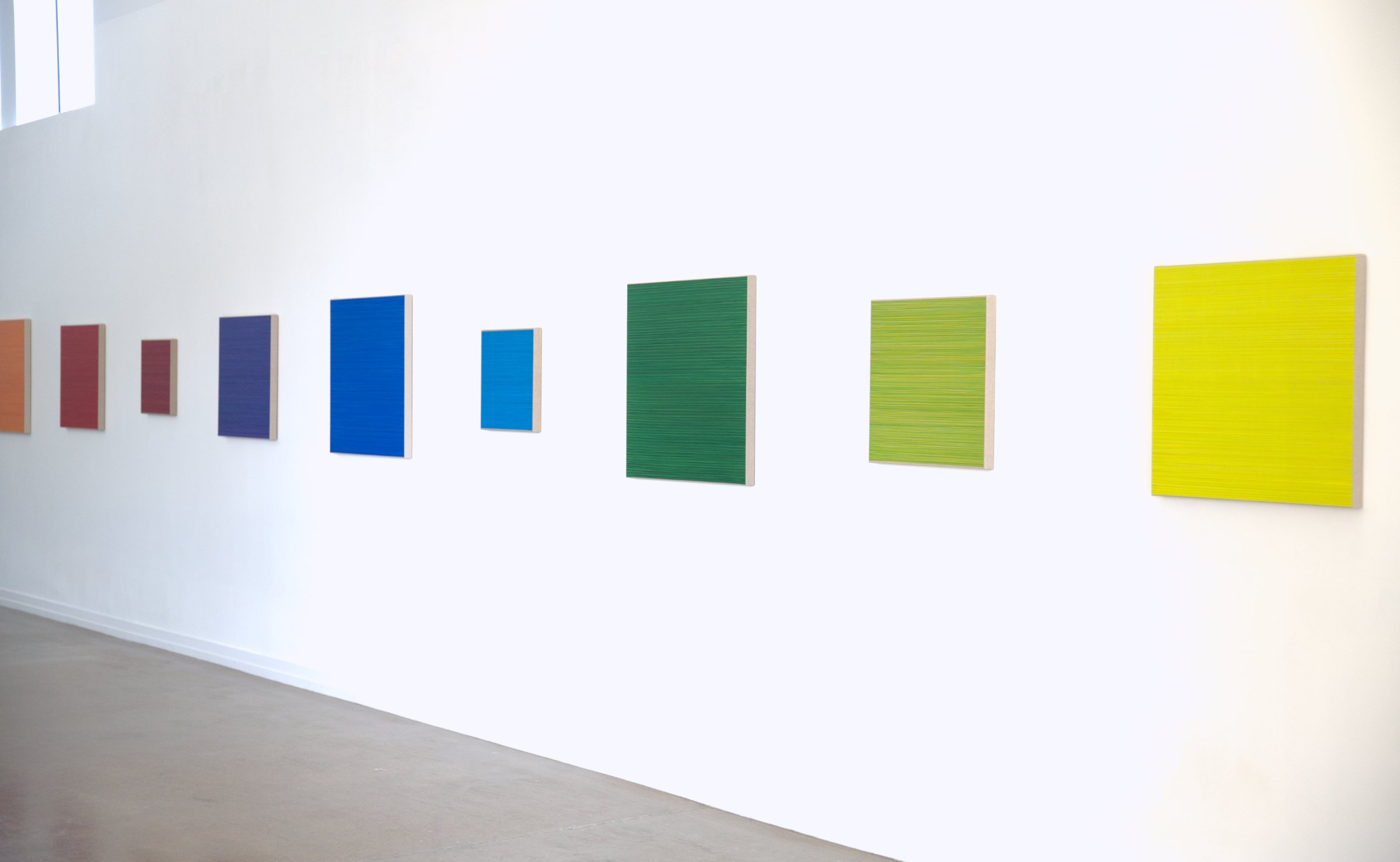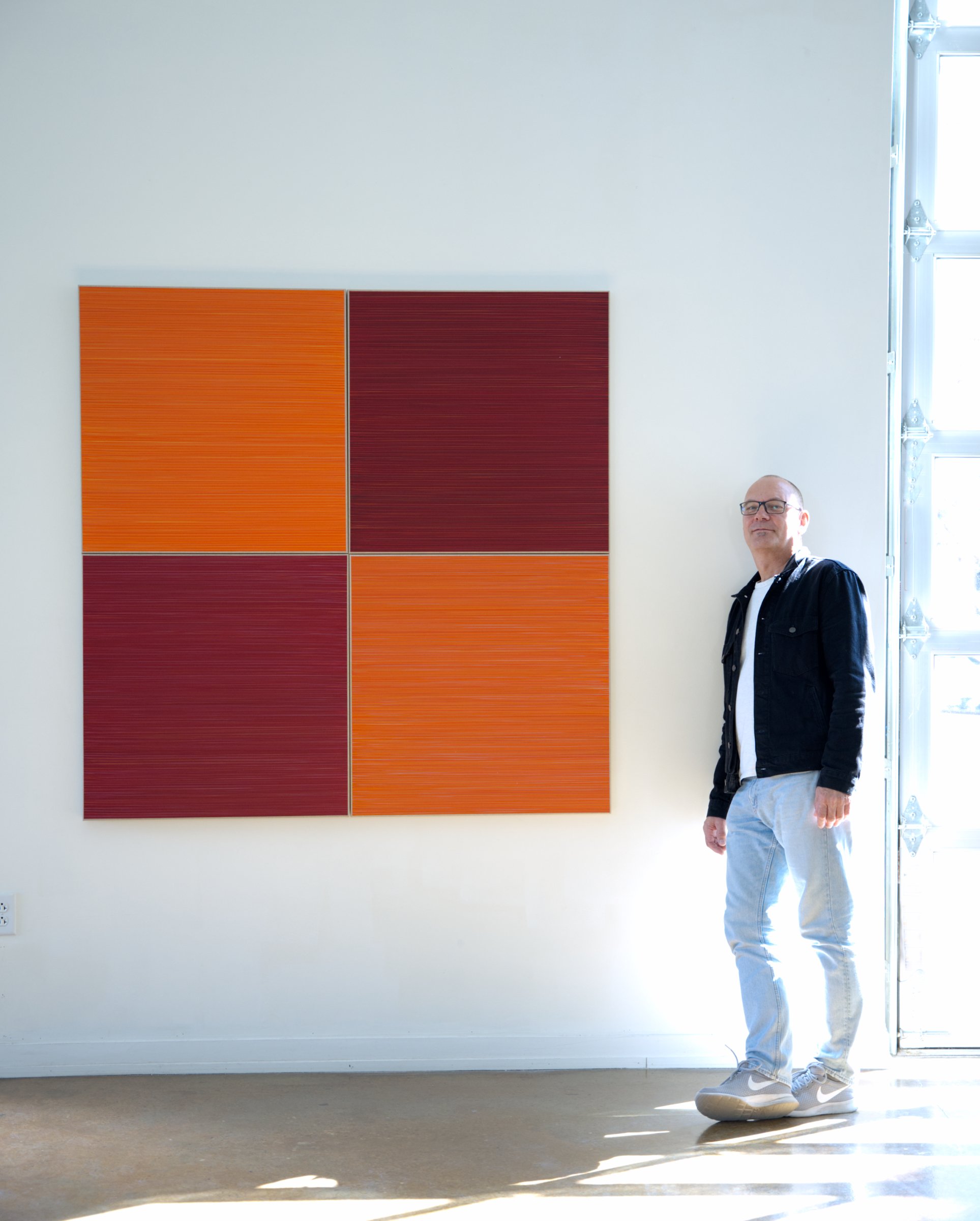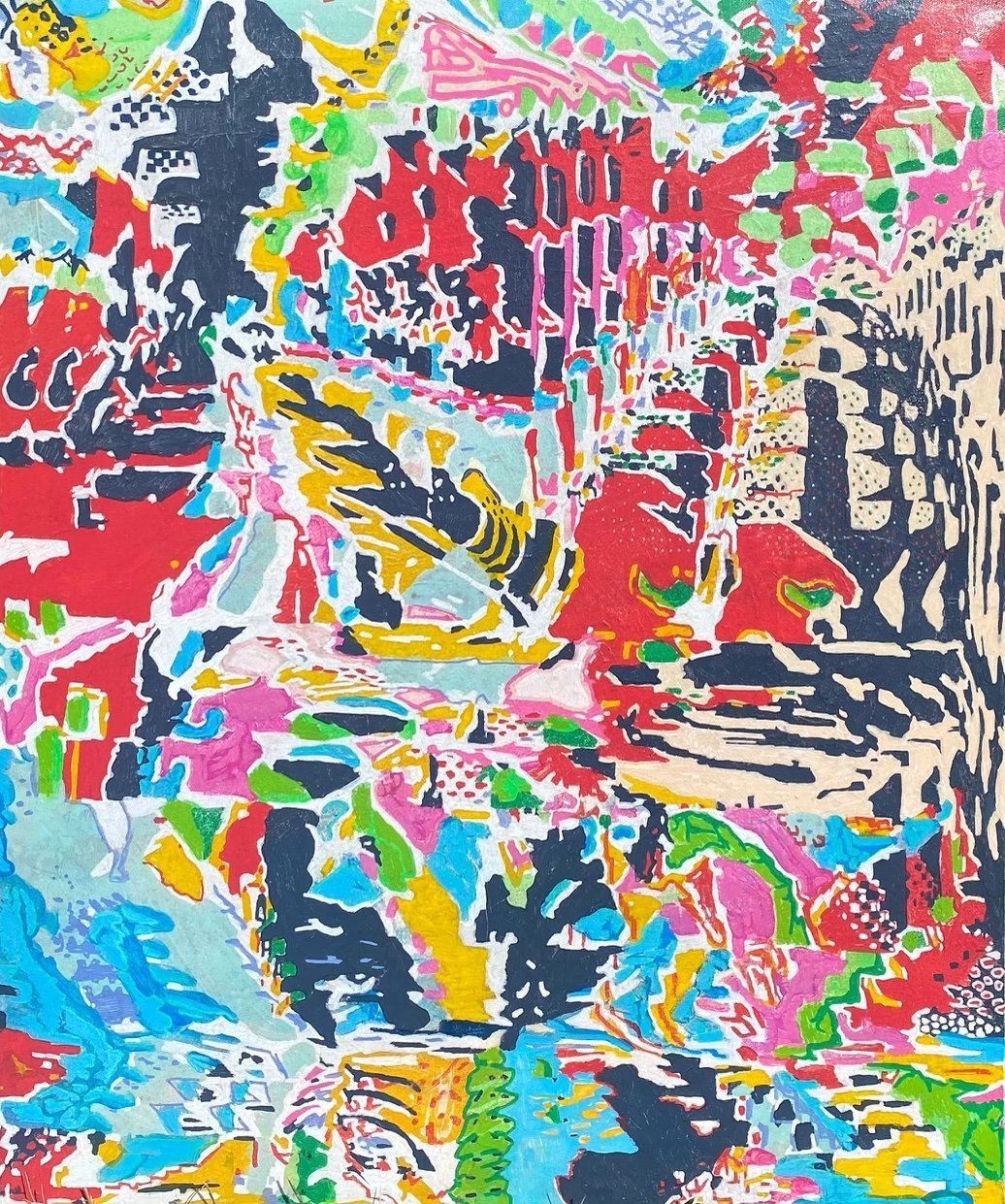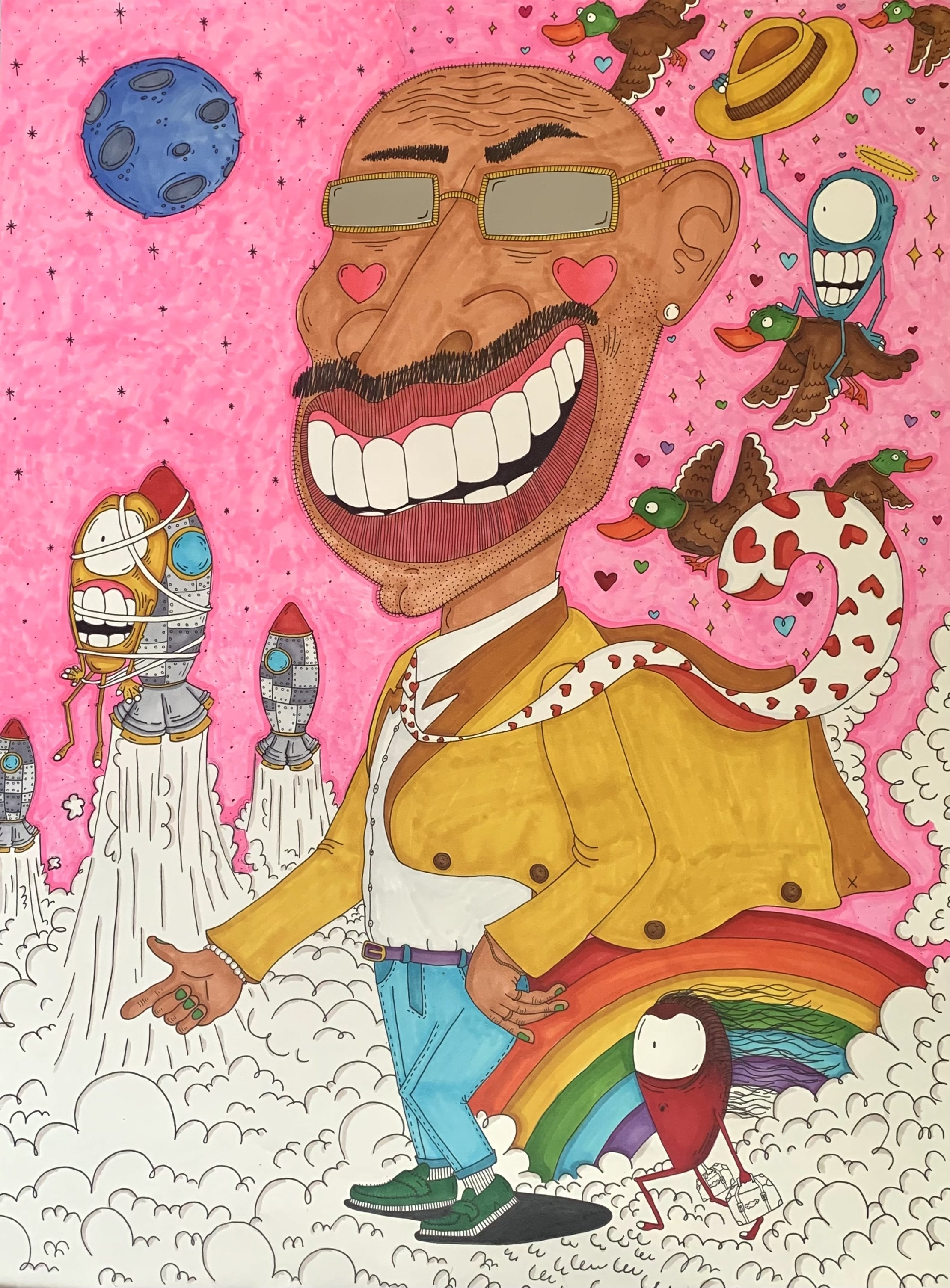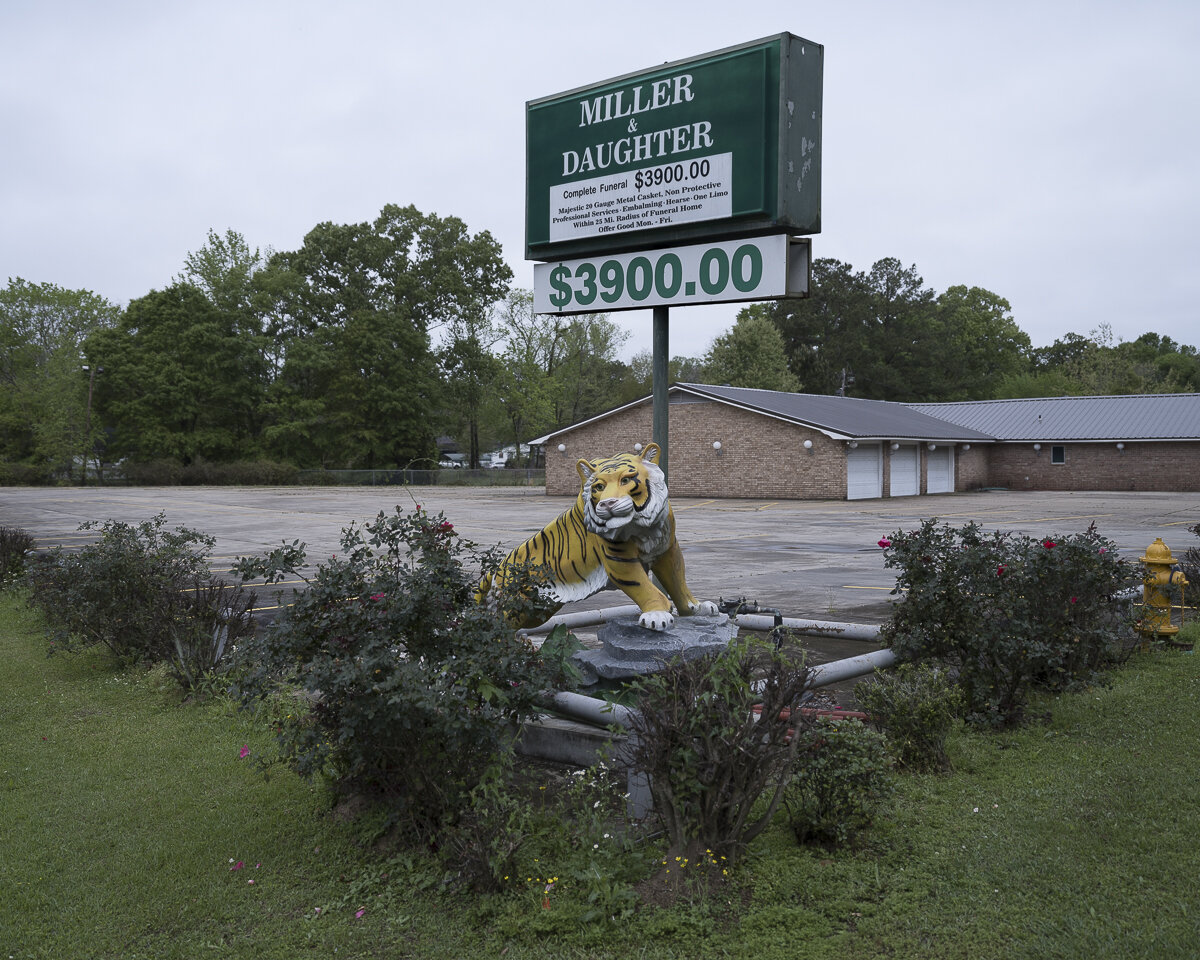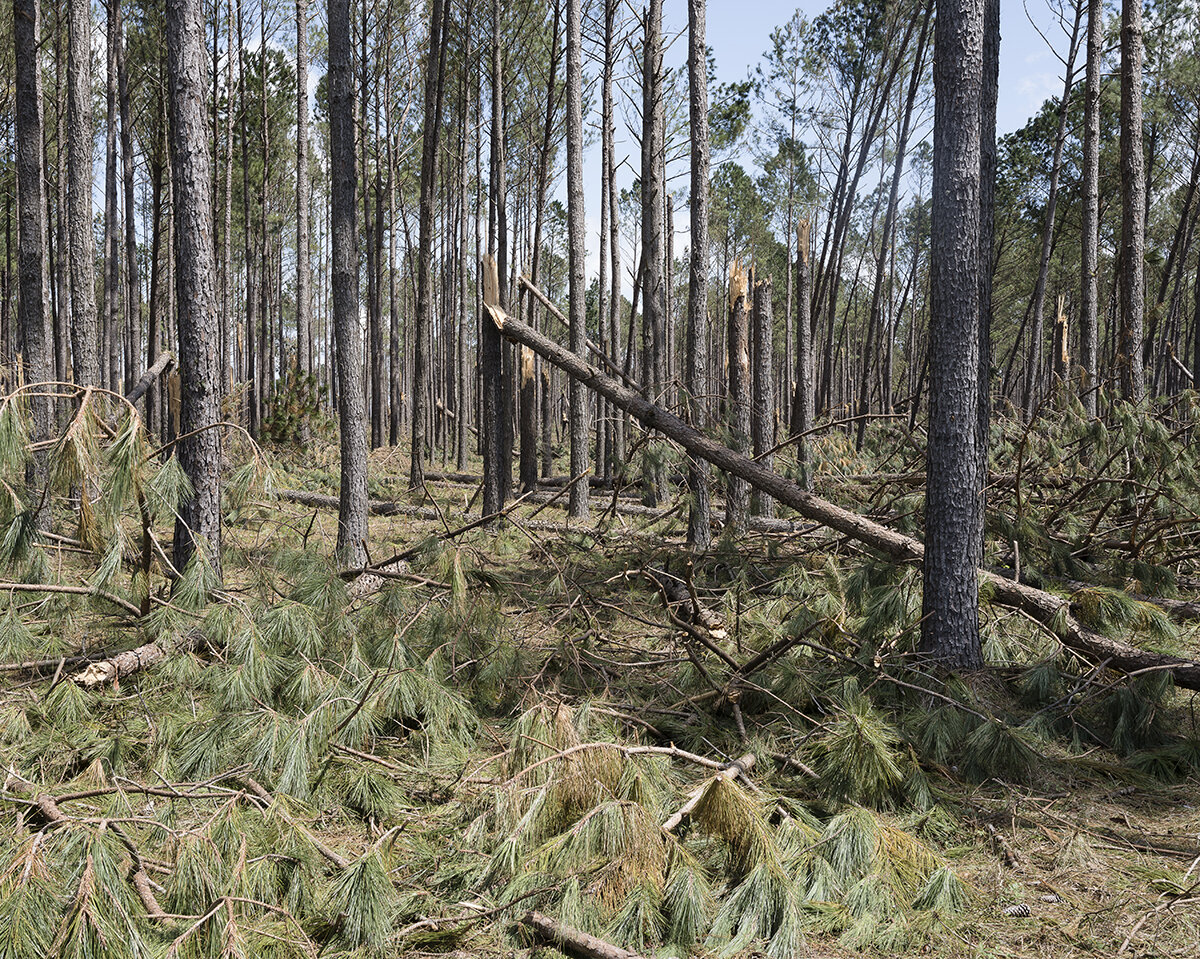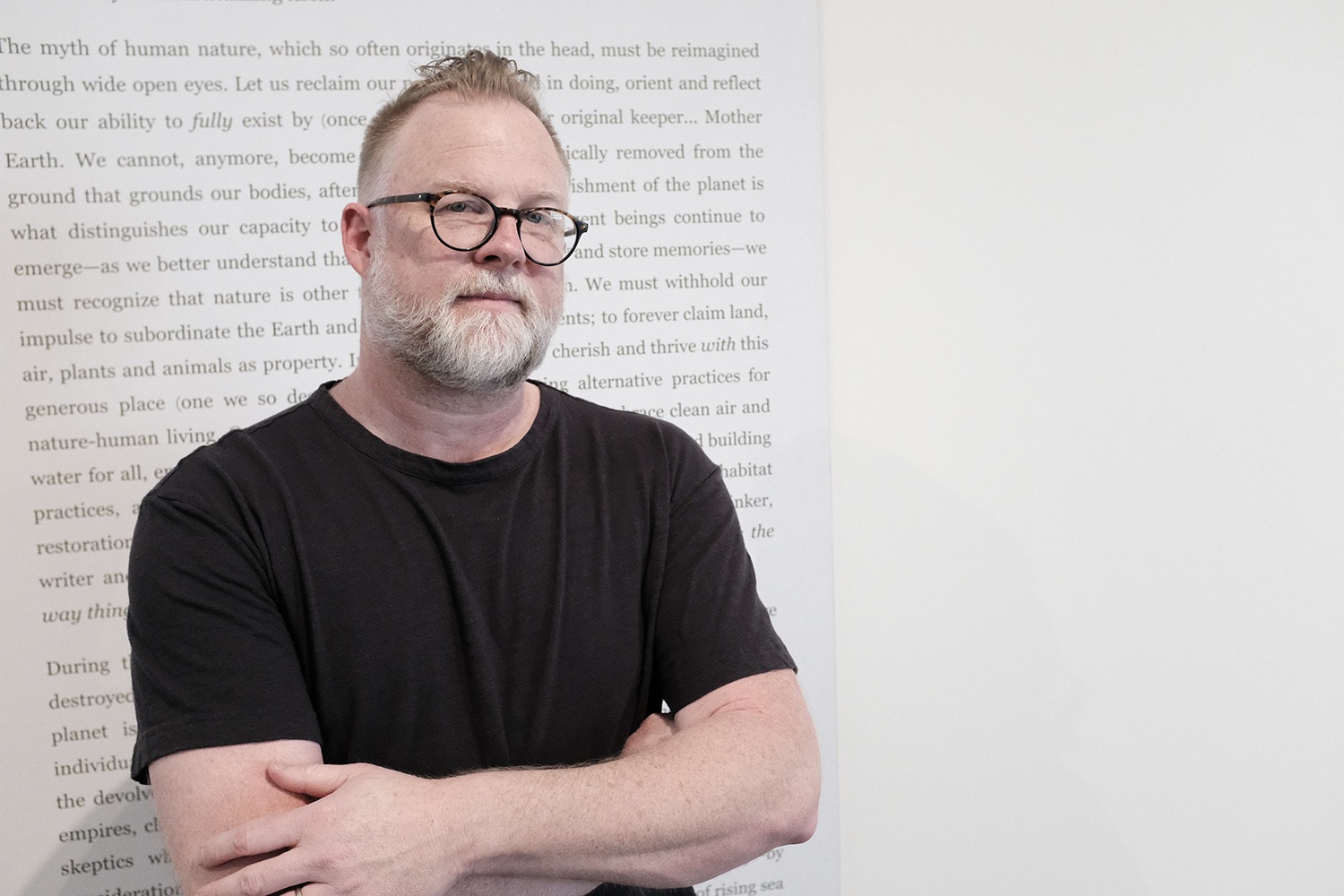In honor of Lars Strandh’s first solo exhibit at Zeitgeist since 2014, we sat down to chat with our favorite Scandinavian painter about his work.
How would you describe your artwork?
I work with the paintings in a reduced way. I don't like calling them minimalistic but more reduced paintings that consist of many layers (usually 25), and every layer in a different color or color shade or different quality of the color, like matte or glossy or very translucent or opaque.
How did you come up with the concept for your new show, Spectrum Line?
Last time, in 2014, when I showed paintings here I made a boogie woogie installation with three different shades of blue mainly. And I was thinking of this very long wall. It was an opportunity to do one large piece. The spectrum is 12 canvases long. It's about testing out all the colors together as a spectrum.
Is that the first time you've arranged your work in that way?
Absolutely. Yeah. When I install shows, they're about the communication between the works, between the colors, how you move in the exhibition. How the architecture works with the paintings and with the viewers. This wholeness of experience and exhibition is also very important to me when I hang the show.
What art movement do you feel your work best fits in?
It's a difficult question because some of those who are into minimalism say that this is not minimalist because you have the hand in it. You have all the brushstrokes. They are quite often uneven; there are mistakes. But on the other hand, a lot of people who are interested in figurative stuff or more abstract stuff say that not enough is happening here. So I don't know but I think I feel more related to post minimalism. If I have to put myself somewhere.
What fascinates you about color?
I think our color memories and the perception of color, how we react to color is very interesting. We sometimes can imagine that the white painting is a snow landscape and the blue is the sea and the green is a field or and I think it's also based on our memories or our references and if we like a color or not. We can put in a lot of color theory and art history and talk about my art in an intellectual and complex way, but it can also be as simple as, like my mother said once, “I don't really understand what you're looking for, but I like the red one. It makes me happy.” It can actually be as simple as that and of course if you live with my paintings, they will change. Hopefully, you will explore them in more complex ways than just liking them.
Lars Strandh’s exhibit, Spectrum Line, is on view at Zeitgeist through October 28.

